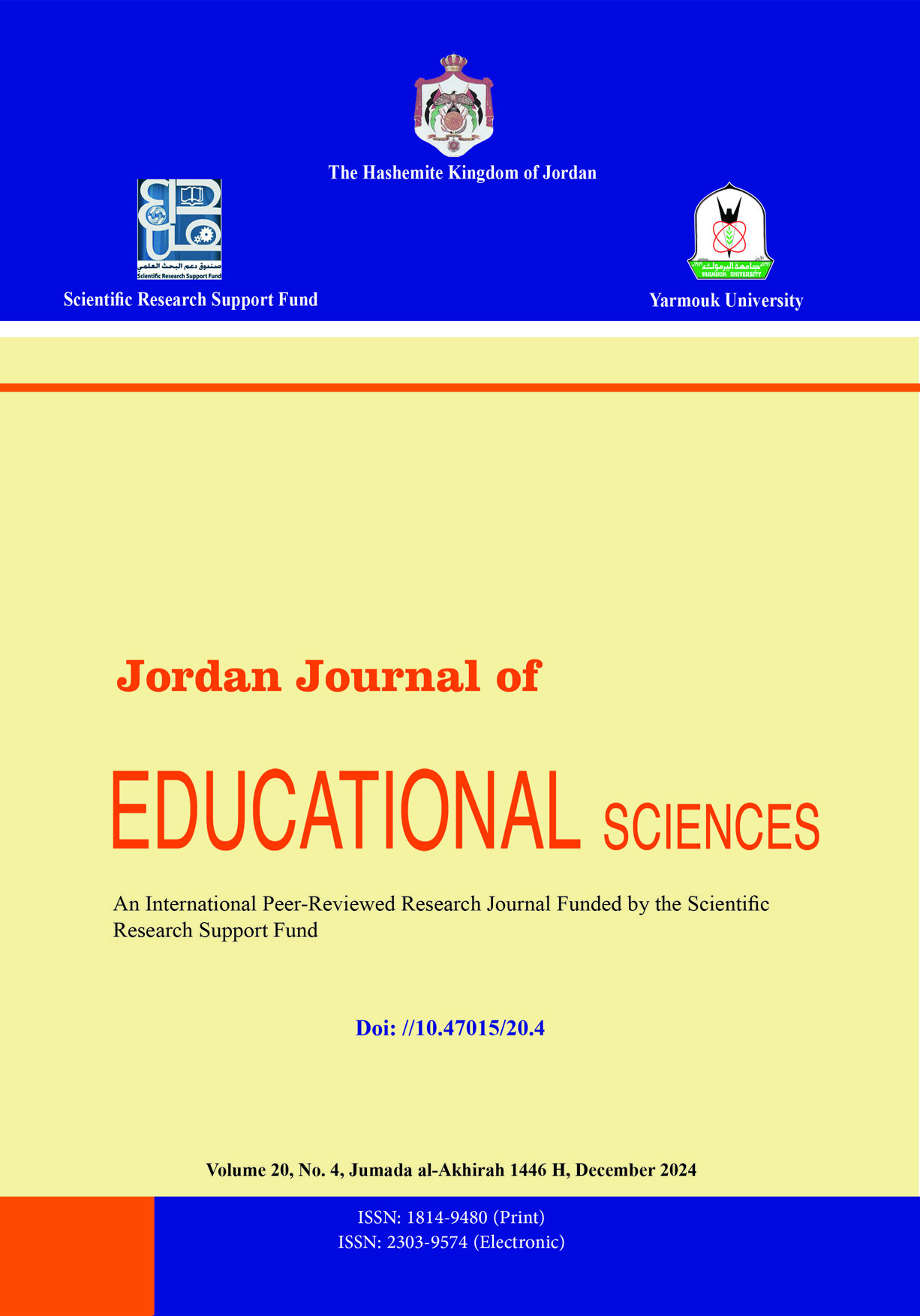Occupational Stress Coping Strategies as Predictors of Job Anxiety and Sense of Professional Satisfaction among Married Female Teachers in Irbid Governorate
DOI:
https://doi.org/10.47015/20.4.1Abstract
Objectives: This study aimed to explore occupational stress coping strategies (OSCS) predicting job anxiety and a sense of professional satisfaction among a sample consisting of 232 married female teachers. Data were collected online using three scales measuring OSCS, job anxiety, and professional satisfaction. Methodology: To achieve the study's objectives, the descriptive predictive approach was followed. Results: Results indicated that significant differences in positive occupational stress coping strategies were attributed to age; the scores for the over-40 age group were higher. It was also found that significant differences were attributed to experience; the scores for the over-15-year group were higher. Additionally, significant differences were attributed to educational qualifications; the scores for the graduate studies group were higher. Furthermore, positive occupational stress coping strategies were the most effective in predicting job anxiety, explaining 15.5% of the variance, followed by negative coping strategies, which explained 7.5% of the variance. Additionally, positive occupational stress coping strategies were the most effective in predicting a sense of professional satisfaction, explaining 15.7% of the variance. Conclusion: In light of these results, it is recommended to focus on the importance of mental health for male and female.
Keywords: Occupational Stress, Job Anxiety, Sense of Professional Satisfaction, Married Female Teachers .

